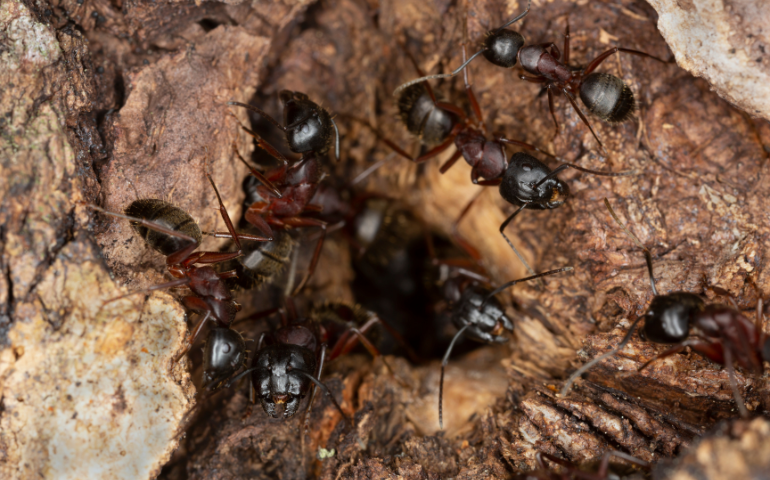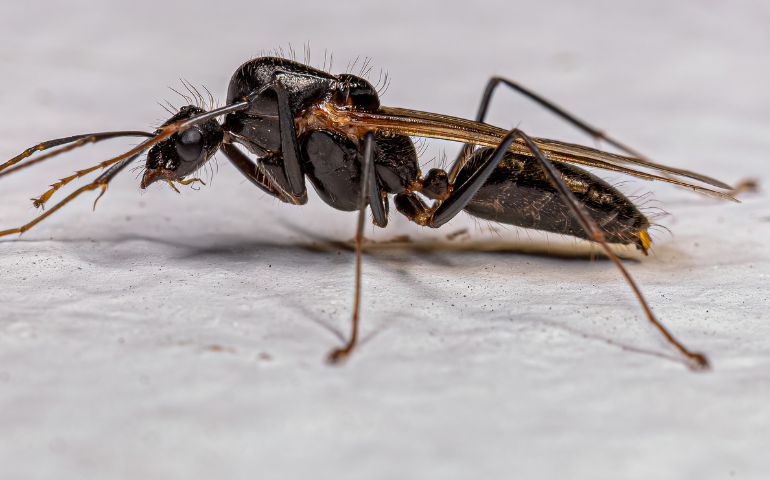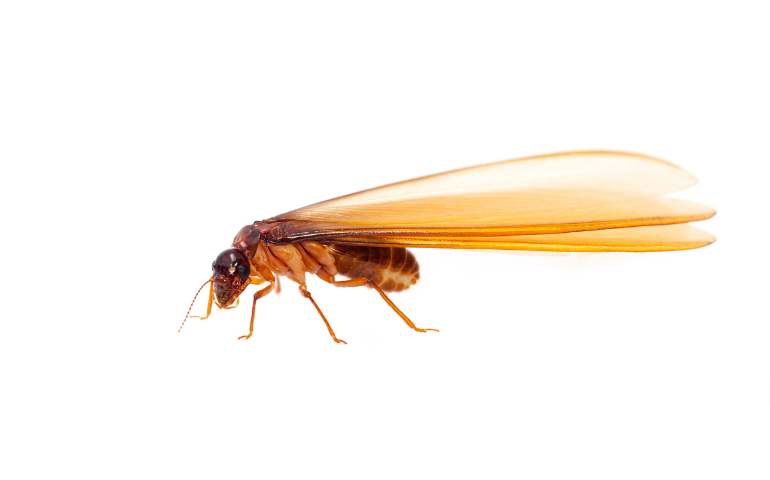If you’ve spotted large black ants crawling around your home or even flying ones near your windows, you’re not alone. Carpenter ants are a common pest that can cause more than just a nuisance. And yes, carpenter ants can bite.
In this post, we’ll explain what a carpenter ant bite feels like, how to spot carpenter ants with wings, and what to do if you suspect a carpenter ant infestation.
Do Carpenter Ants Bite?

Yes, carpenter ants do bite. They’re not aggressive toward people but will defend themselves if disturbed. They can bite using their strong jaws, and some species also release formic acid into the bite. This chemical can cause a mild burning or stinging feeling.
A carpenter ant bite may cause:
- A sharp pinch or quick sting
- Mild redness or swelling
- A burning sensation if formic acid is present
While not dangerous, these bites can be uncomfortable, especially for children or pets.
What Do Carpenter Ants Look Like?

Many people confuse flying carpenter ants with winged termites, especially in spring and summer when both are more active. It’s important to tell the difference because the treatment for each is completely different.
Carpenter Ants with Wings vs Winged Termites
- Winged carpenter ants have two pairs of wings, with the front pair longer than the back.
- Winged termites have four wings of equal size.
- Carpenter ants have a narrow, pinched waist, while termites have straight-sided bodies.
After mating, winged ants will often shed their wings and begin forming a new colony inside wood structures.

Why Carpenter Ants Are a Problem
Carpenter ants don’t eat wood, but they nest in wood by hollowing it out to build tunnels and expand their carpenter ant colony. Over time, this can cause serious damage to your home, especially if the infestation goes unnoticed.
Here are some signs of a carpenter ant nest:
- Piles of sawdust or wood shavings near baseboards or window sills
- Large black ants seen indoors, especially at night
- Faint rustling sounds inside walls
- Lines of worker ants traveling to and from food and water sources
Carpenter ants are drawn to moist or water-damaged wood, so they often build nesting sites in attics, crawl spaces, decks, or behind walls.
How to Get Rid of Carpenter Ants
Dealing with carpenter ants on your own is tricky. Store-bought sprays may kill a few worker ants, but they won’t eliminate the hidden colony or stop the damage. If you want long-term relief, it’s best to work with a pest control company that knows what to look for.
At Alta Pest Control, we offer pest control services that focus on eliminating the colony, not just the surface activity. Specifically we:
- Identify the carpenter ant nest and nesting locations
- Use targeted treatments that are friendly for families and pets
- Treat both the inside and outside of the home to stop future activity
- Provide detailed follow-up and education with every visit
We also help address moisture or food sources that may be attracting ants to your home in the first place.
Why You Should Act Fast
A carpenter ant infestation can spread quietly, causing more structural damage over time. The longer you wait, the more difficult it can be to find and eliminate the colony. By calling early, you’ll prevent costly repairs and enjoy peace of mind sooner.
Final Thoughts
So, do carpenter ants bite? Yes, and while their bite isn’t dangerous, it’s one more sign that these pests are too close for comfort.
Whether you’re seeing winged carpenter ants or wondering if that sawdust in the corner is a warning sign, we’re here to help. Our team is trained to spot the signs, find the problem, and solve it for good.
Reach out to Alta Pest Control at 866-201-7787 and let us help you get rid of carpenter ants!
Share article:
